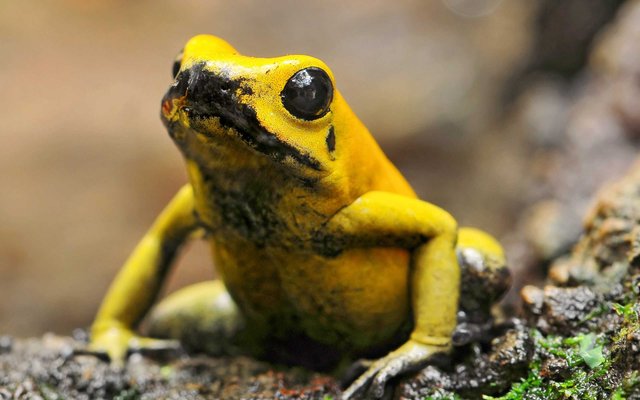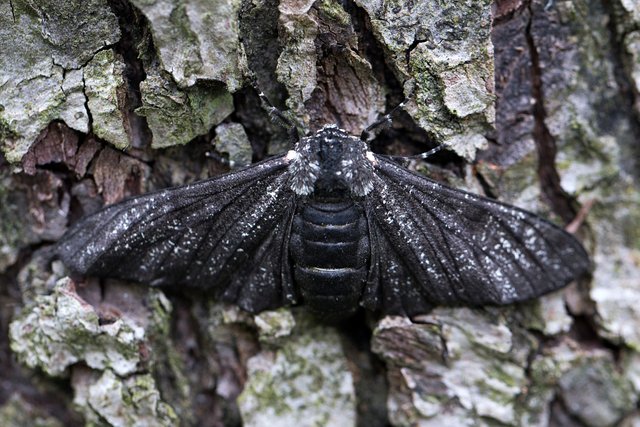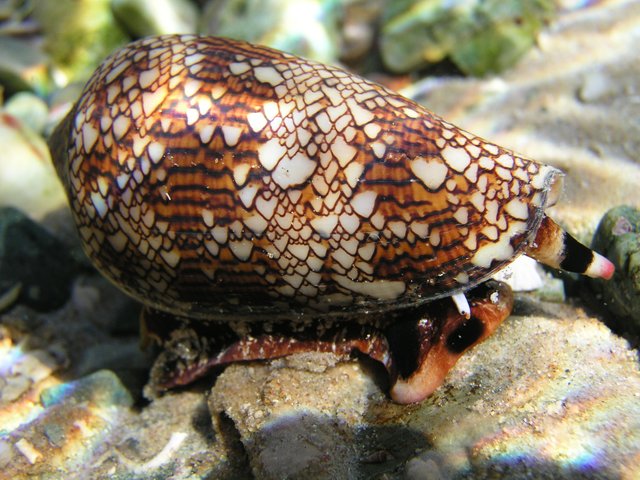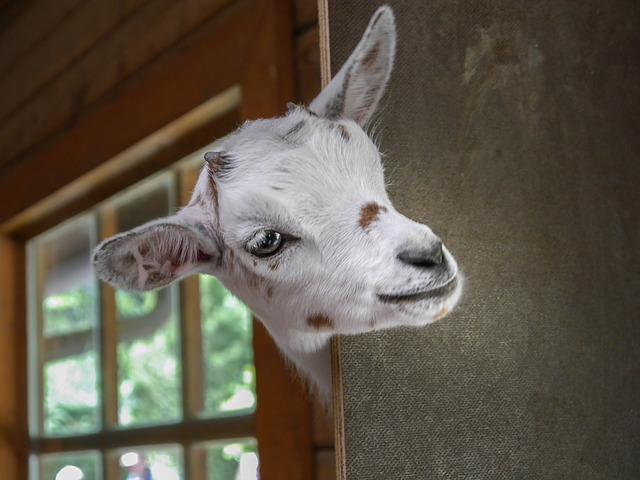Rules of camouflage. How biology and mathematics control the coloring of animals.
Giraffe spots, zebra strips, patterns on the butterfly wings - how many children tormented their parents with questions about where these bizarre live drawings come from. The answer is! A little chemistry, a little bit of math and evolutionary selection - nature paints its creations according to certain rules.

Why do you need an unusual color?
Rudyard Kipling has a fairy tale about how the leopard got its spots: once upon a time all the animals on the earth were painted exceptionally evenly, but then the herbivores went to the forest, got strips, stains, and other masking patterns, and predators had to adapt to new conditions. Shortly thereafter, people first turned black (Kipling retells the Ethiopian tale), and then from hunting solidarity they covered with the prints of their leopard hands, so that they again could quietly get to the prey.
Dozens of similar stories about animals can be found in various parts of the world: even Charles Darwin believed that the main function of the unusual coloring of many animals is disguise, helping them either to merge with the surrounding area, or to deceive the sight of predators (or, conversely, victims) and blur in their eyes, meaningless spots.
For many animals this is true, but not for everyone. For example, in a study in 2016, Canadian, American and Japanese scientists have shown that the black and white stripes of zebras are not very well suited to their natural habitat. Using data on the vision of lions and spotted hyenas, the main enemies of zebras, researchers have shown that in open terrain predators will distinguish striped animals as well as their monotonous relatives. Therefore, the coloring of zebras, according to scientists, can not be explained by the classic "camouflage" version.

Source Black and white coloring badly helps zebras hide from predators.
Often bright colors still serve to deter predators, but this is also not the case of zebras. They are, first, not poisonous, and secondly, they have absolutely no one to mimic: in the habitat of zebras there are no other poisonous animals with such coloring. Therefore, the authors of the article concluded that strips carry primarily a social function - for example, zebras can use them to recognize their relatives.
What substances color the animals?
In warm-blooded animals, pigment melanin is responsible for coloration, which is produced by specialized melanocyte cells. Melanin is of different colors - black, brown, yellow, reddish - and is found in the skin, hair and the iris of the eye. In the absence of melanin, the skin is almost colorless and tinted only at the expense of blood vessels, and with increasing melanin concentration, the color becomes more and more saturated. Accordingly, dark spots on the skin of a yellowish leopard are areas with an increased active content of melanin.
In cold-blooded animals, everything is a bit more complicated. Instead of melanocytes, they use chromatophores - pigment-forming cells that not only give a much more diverse color, but also are able to change their sizes. Thanks to them chamelon can change its color depending on the temperature of the environment or its mood. Under the skin of the chameleon, there are several layers of chromatophores at once. The uppermost contains cells with a red or yellow pigment that can be redistributed to the cells of the chromatophores and then collected in their center, then spread out in breadth. In the first case, a second layer becomes visible, which contains cells with a guanine pigment, which due to the interference of light can reflect blue. And the deepest layer contains melanin. Depending on the ratio of the "activities" of these layers, the chameleon can acquire a variety of colors - from red to blue.
What controls all these processes?
"Nothing in biology makes sense, except in the light of evolution," said the Soviet-American classic of genetics Feodosy Dobrzhansky, and the coloring of animals is no exception: evolution selects only the best drawings that help their bearers survive.
The most striking example - a butterfly birch moth, Biston betularia. Until the middle of the XIX century, they were all inconspicuous gray color, which helped to merge with tree trunks. But together with the intensive growth of industry, they gradually began to blacken, as if covering themselves with soot, in order to better fit the new conditions.
At some point, the number of black moths was even several times larger than the gray ones, but then people began to fight air pollution, and now only about 5% of the entire population. In 2016, scientists uniquely associated such an adaptive and reversible change in the color of butterflies with a mutation in the gene crotex, which appeared in a population of moths in the middle of the XIX century. Then this "blackening" mutation was very helpful in surviving its owners, and as a result, generation after generation, they became more and more. But now, when the trees are less often covered with a thick layer of soot (at least in Manchester), this mutation is no longer relevant. So the coloring of animals can change under the influence of evolutionary selection, even throughout human life.

How are complex patterns formed?
In 1952, the English mathematician Alan Turing, in search of an answer to this question, wrote an article in which complex, chaotic folding patterns were explained by a relatively simple model. He suggested that for the coloring of animals in the simplest form there corresponds not one substance, but two, which interact with each other and diffuse in space with different speeds. The first of them adds color, accelerates the synthesis of the second substance and slowly diffuses, and the second decolorizes the fabric, slows the synthesis of the first substance and diffuses rapidly.
To explain such a model, it is sometimes suggested to present a forest fire. It flares up at once in several places (this is the "first substance"), after which fire crews leave and stop the advance of the flame (this is the "second substance") - as a result, from a bird's eye view we see a green forest with black spots.
A very important feature of the Turing model is its oscillatory character. Substance A in this scheme does not turn boringly directly into B, but changes its concentration in a wave-like manner: it becomes a little less, a little more, then less, and so in the end it (completely) flows completely into B.
Here, too, there is a classic example - the reaction of Belousov-Zhabotinsky. In its canonical case, three substances are involved: a catalyst, an organic reductant and an organic oxidizer, which, together with their intermediate forms, can produce 80 different reactions. All these reactions are intricately intertwined in time and space (do not forget that the reagents have different characteristic diffusion rates), and as a result they "paint" peculiar hallucinogenic patterns.
The nature of these drawings is globally determined by the shape of space, where the substances interact, the diffusion coefficients and, in part, the initial concentrations. All together, this sets the general motif of the pattern (spots, strips, concentric circles), and the details of the pattern (how the spots will be scattered) are determined by absolutely chaotic factors like inevitable temperature fluctuations.
According to Turing, an unusual coloring of the animals is similarly obtained: some factors (diffusing substances entering into each other in the reaction) in the chaos of their interaction determine the activity of the same chromatophores and melanocytes, and already those "transfer" the resulting "chemical" picture to the skin.
For a long time, this assumption was only indirect confirmation. In numerous models according to the rules of Turing, a variety of patterns were obtained, repeating the coloration of a variety of animals: from tropical zebra fish to guinea fowl. But the molecular nature of the reactions remained incomprehensible.
In 2012, everything has changed a little. Scientists led by Jeremy Green from Kings College showed that the formation of periodic irregularities on the palate of mice is determined by two substances working according to the Turing scheme, a fibroblast growth factor (FGF) and an inhibitor "Hedgehog-Sonic" (Shh). Of course, this is not yet a job of coloring, but, probably, they will soon come too - the original Turing article was not just about pigmentation, but also morphogenesis in general, that is, the emergence and development of organs.

Source The pattern on feathers of guinea fowl is given by equations.
There is another mathematical model, which, apparently, determines the coloration of animals, is a von Neumann cellular automaton. It looks like this: imagine a flat lattice in which each cell can be either painted over or not. You can specify the initial state (paint some cells) and determine the rules for the evolution of the model - which neighboring cells each individual cell must "look" to calculate what will happen to it in the next moment.
Rules can be, for example, such: each cell "looks" at once to all its neighbors. If the cell is empty, and three or more neighbors are painted over, the next time it is also painted over. If the cell is empty, and less than three neighbors are painted, it is also empty, and so on.
There are a lot of different variations of cellular automata, and some of them also repeat animal patterns - even more complex than leopard spots or concentric circles. For example, the figures on the shell of the mollusk are a textile cone, Conus textile, very similar to the cellular automaton, living according to "rule 30".

My friends - thank you for your attention!
Very educational. Thank you for teaching all of us at @steemiteducation something new today. Please consider writing under the steemiteducation tag. That way, we can find your educational posts more easily.

Your post was resteem by Whale ResteemService @booster007
Keep it up!
All the best!
First Follow for 3 hours | Send a minimum transaction 0.100 steem/SBD with post URL in memo | Your post gets resteemed | A post can only be resteemed once!
taken by me :) ^^
@kuku12170 payed 3.95 SBD to @minnowbooster to buy a stealth upvote.

transaction-id 2e676083c9eb447221cf46eeba3001749cf9ff01
@stealthgoat